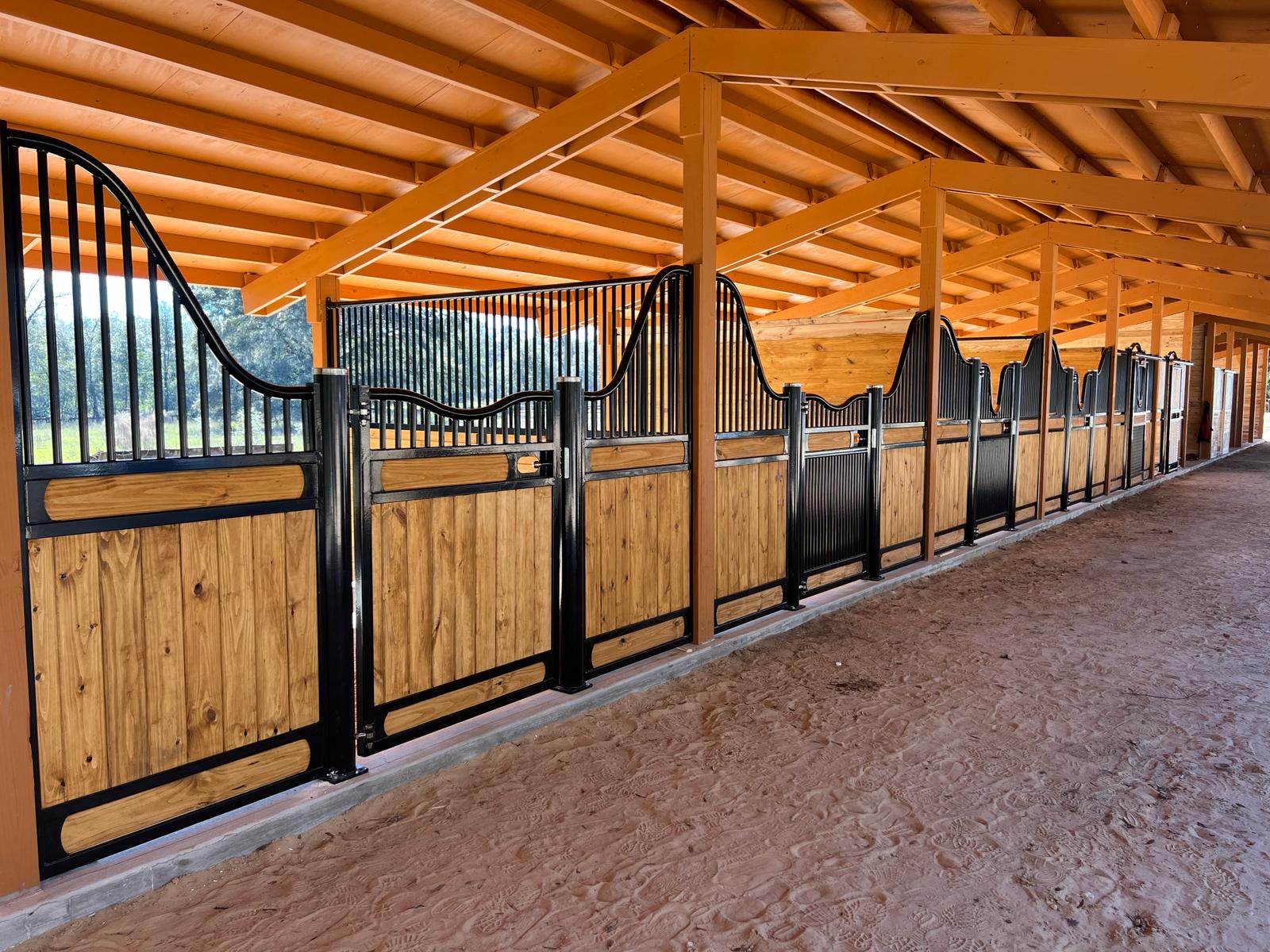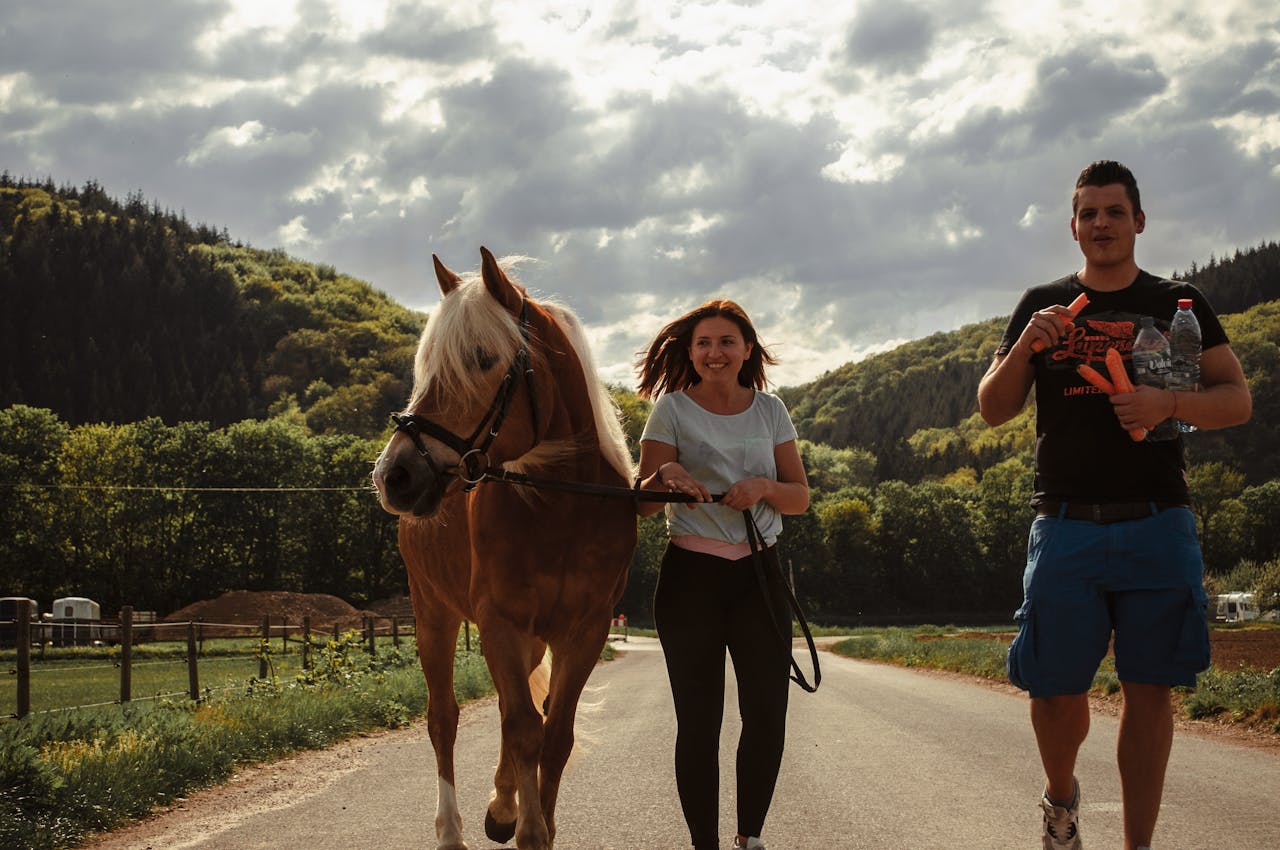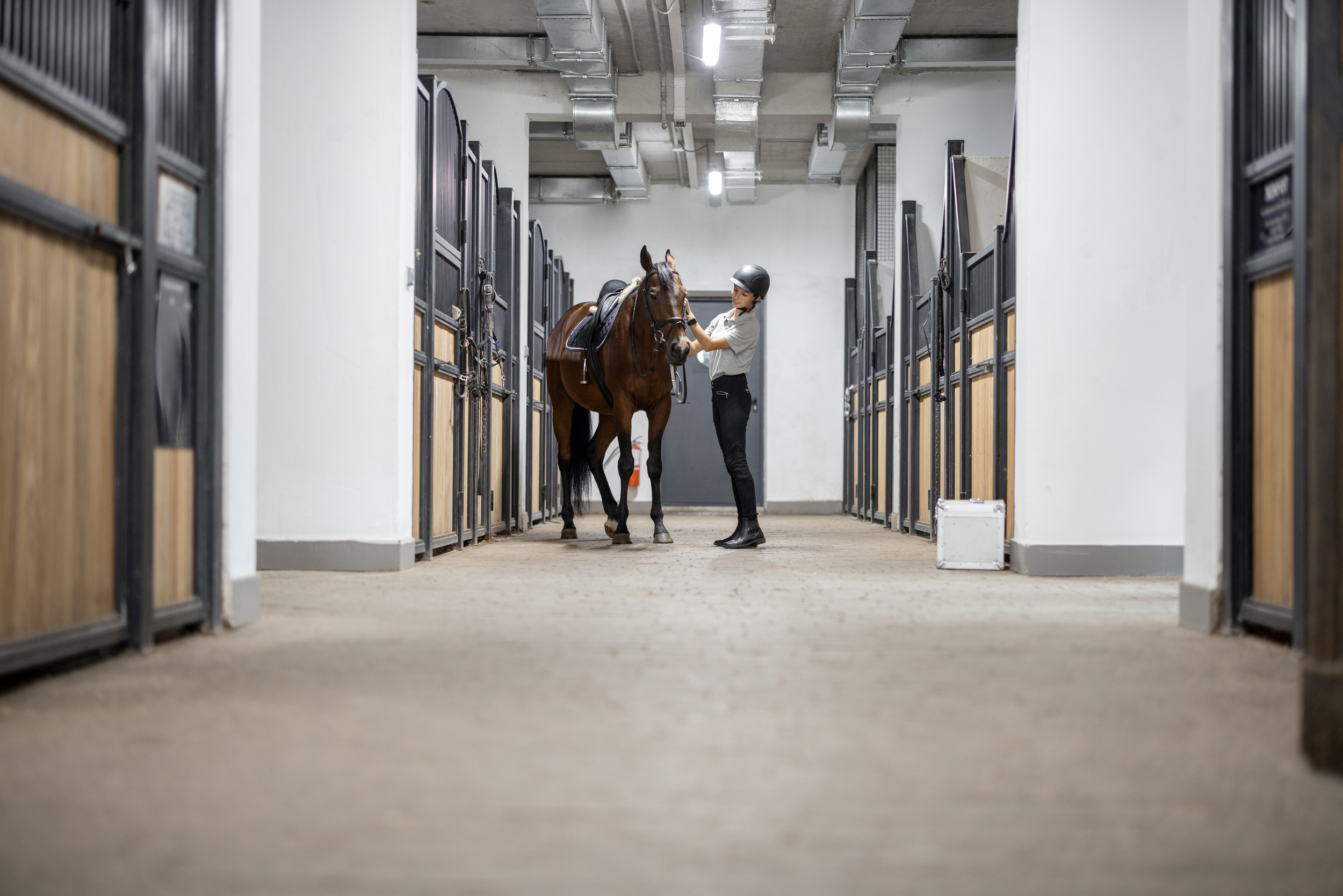Choosing the right stall door for your horse facility is crucial. The decision between hinged and sliding doors has significant implications, and understanding the differences will help you make an informed choice. This guide delves into the features, benefits, and drawbacks of both hinged and sliding stall doors to assist you in selecting the best option for your horses and facility.
Understanding Hinged Stall Doors
Hinged doors, also known as swing doors, operate like traditional house doors with hinges. Depending on your barn’s design, these doors can swing open either inward or outward. These types of doors are found in a lot of barns and tend to be more common than sliding stall doors. George Washington’s Mount Vernon’s stalls are hinged doors.
Dutch doors are popular type of hinged door.
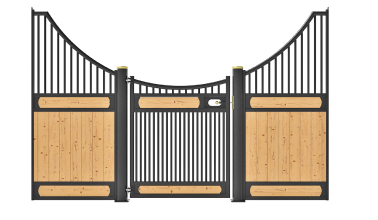
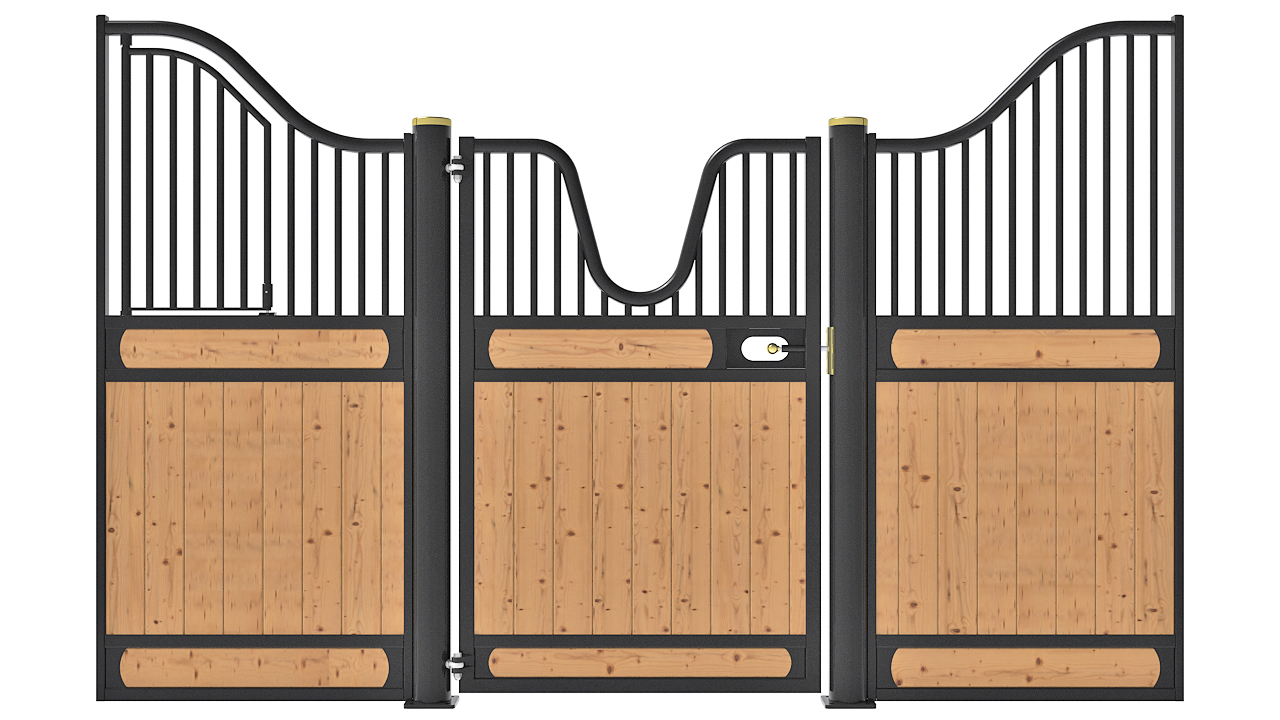
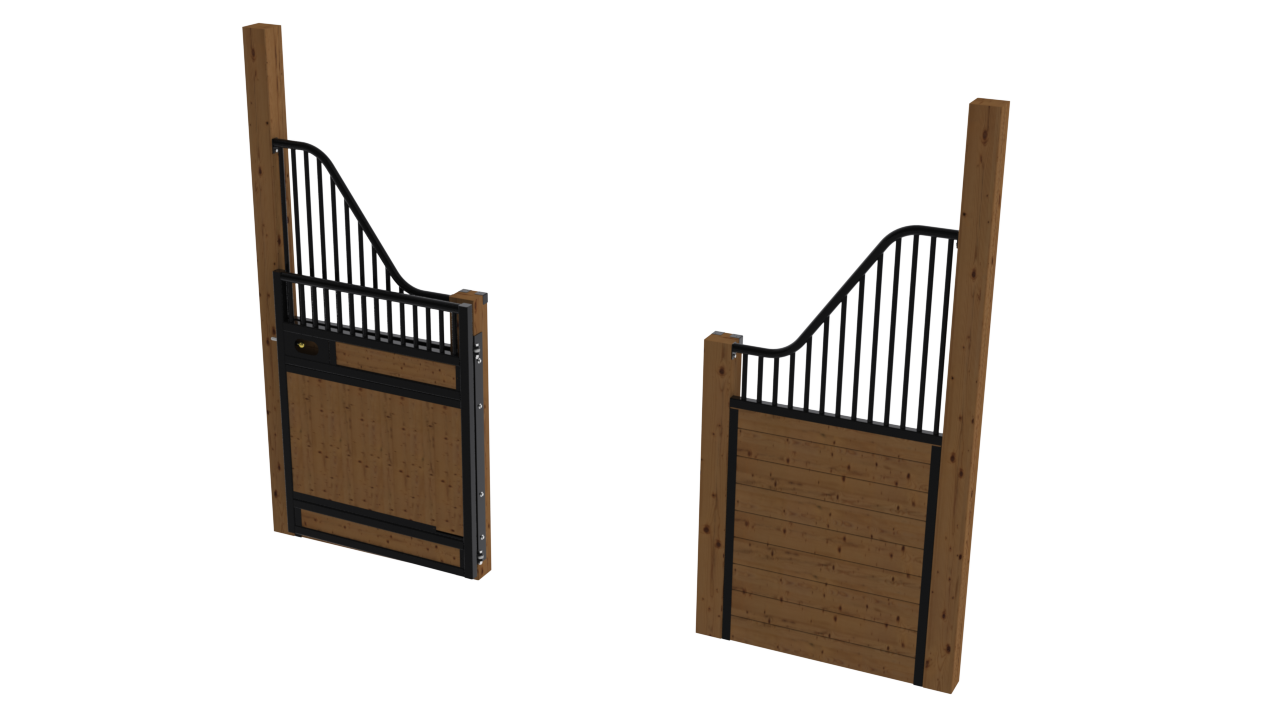
Illustrations of hinged stall doors.
Key Features and Benefits:
Ease of Access:
Hinged doors offer wide and clear openings, making it easier to lead horses in and out of their stalls. This is particularly beneficial when handling large or spirited horses.
Durability and Simplicity:
With a straightforward mechanism involving heavy-duty hinges, hinged doors ensure smooth operation. At Saratoga Stalls, our hinged doors are precision-engineered with CNC-machined latches for secure and reliable closure.
Design Variety:
Hinged doors come in numerous styles and finishes, allowing you to match the look of your barn. Whether you prefer a traditional or modern aesthetic, you can find a design that complements your facility.
Enhanced Ventilation:
Many hinged doors feature upper grilles or mesh sections that improve airflow, enhancing ventilation for horses and making communication easier for handlers.
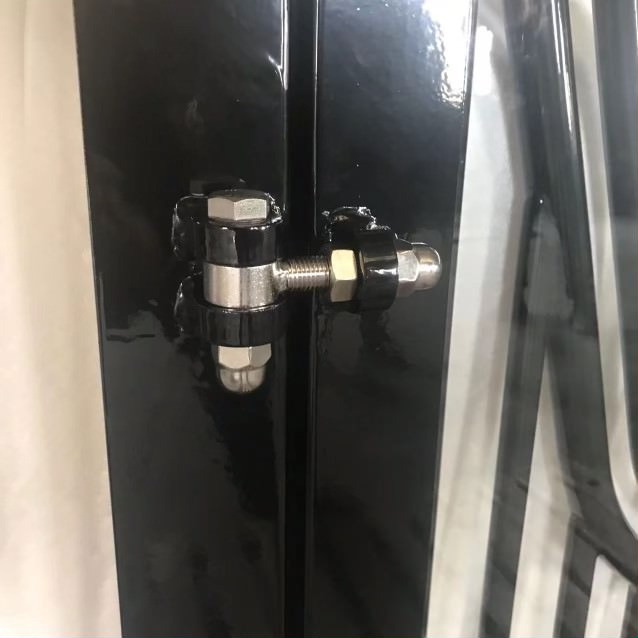
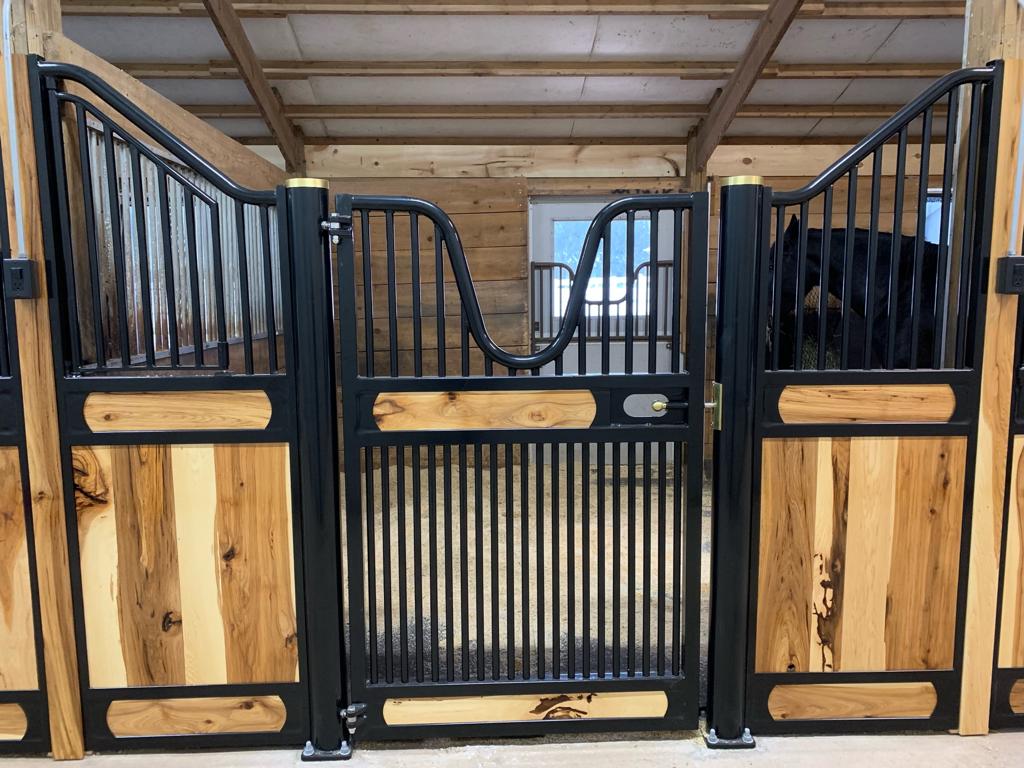
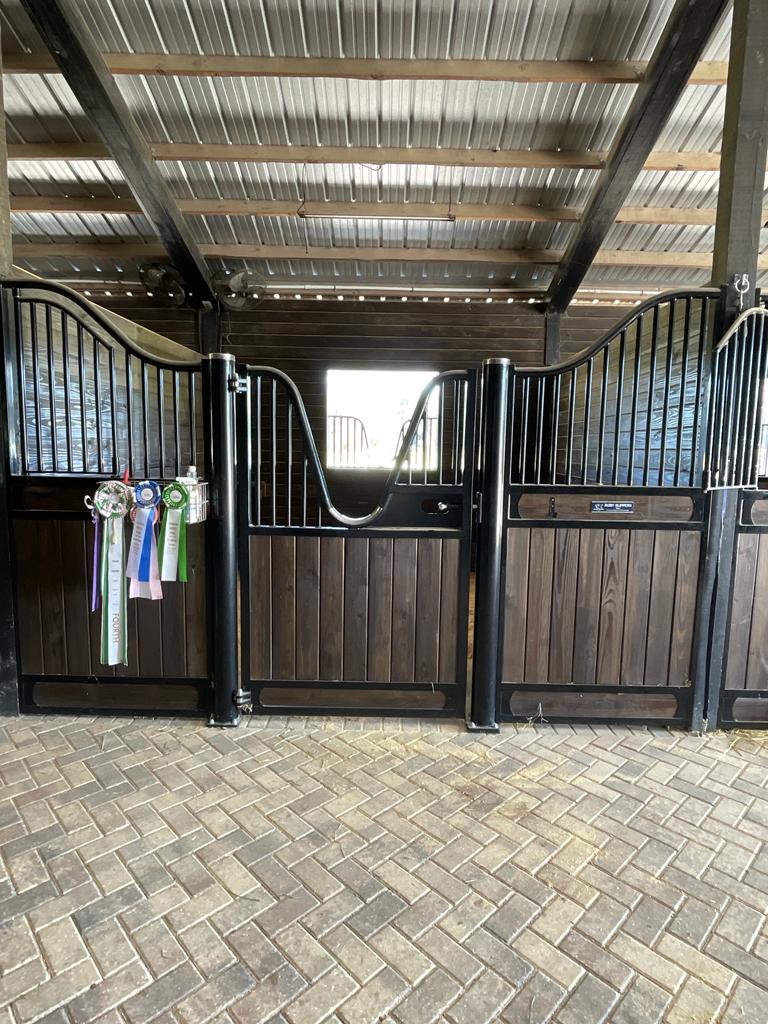
Potential Drawbacks:
Space Requirements:
Hinged doors need adequate clearance to open fully, which can be a limitation in barns with narrow aisles or limited space, potentially leading to logistical challenges.
Safety Concerns:
In confined spaces, swinging doors can pose a hazard. Horses or handlers could get caught in the swing path, leading to injury. Also if a hinged stall door doesn’t latch properly, your horse could get loose. In the event of a fire emergency, hinged stall doors could cost precious seconds are more action is required. Proper design and installation can mitigate these risks, but it’s important to consider these issues.
Understanding Sliding Stall Doors
Sliding horse stall doors operate on a track system, moving horizontally to open and close. This design is popular in modern barns and offers a sleek and efficient solution. These types of stalls are typically found in prefab stall kits
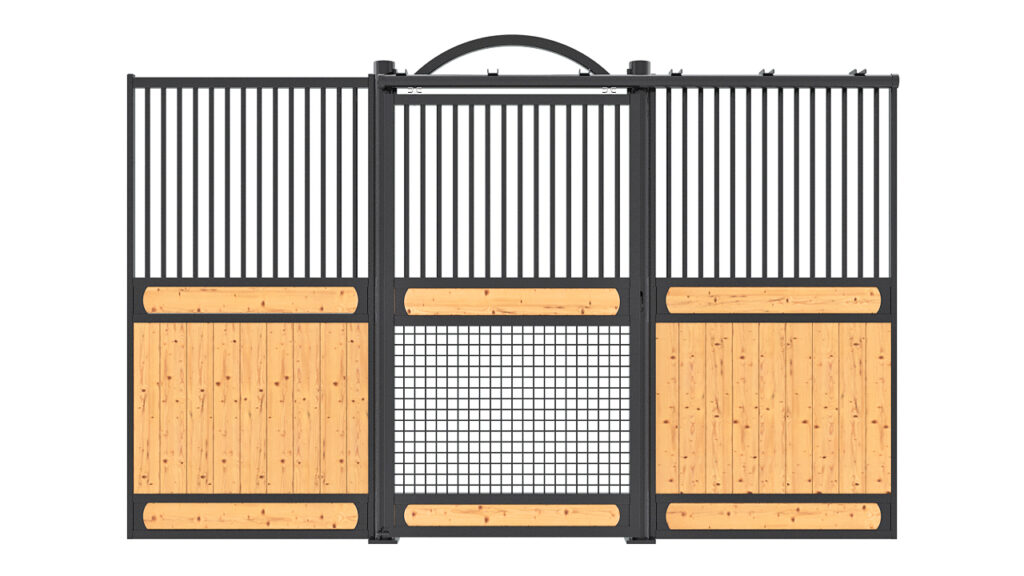
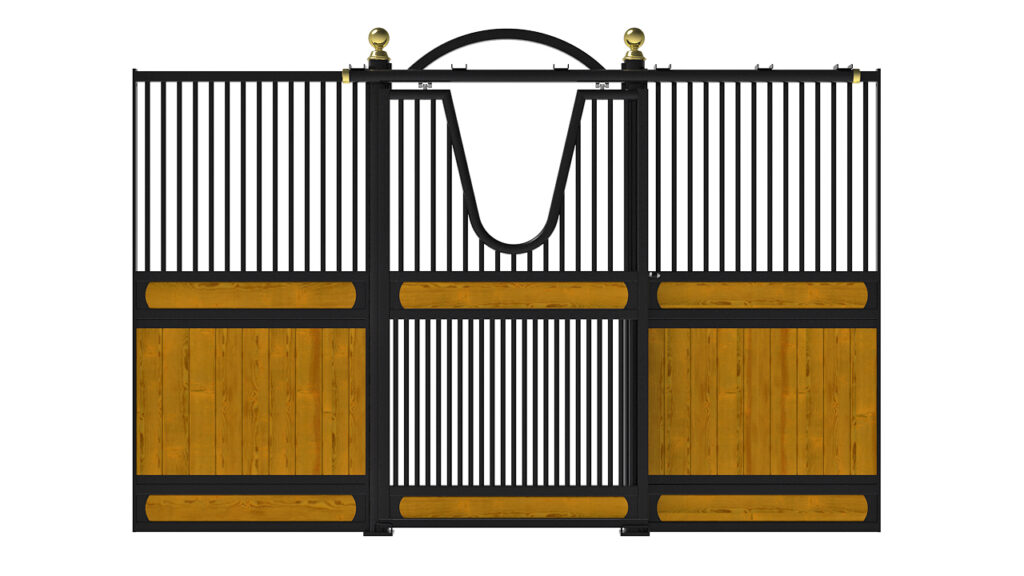
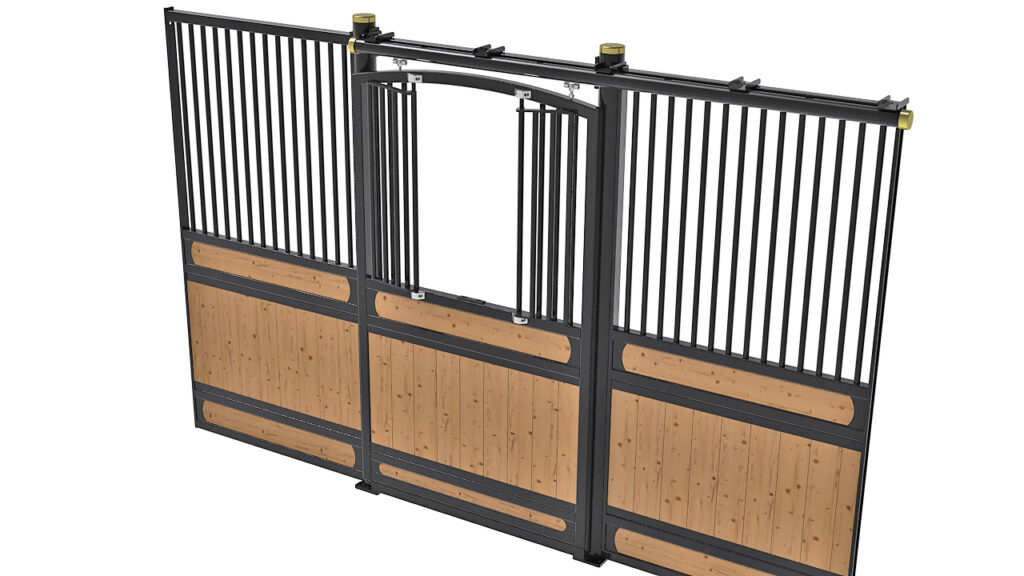
Key Features and Benefits:
Space Efficiency:
Sliding doors are ideal for barns with limited space. They can be installed in narrow aisles without obstructing movement, as they don’t require a swing radius. They also make it easier to and cross tie horses down the aisle.
Enhanced Safety:
Sliding doors reduce the risk of accidental injury from a swinging door, providing a safer environment for both horses and handlers. They also stay securely in place when closed, minimizing the risk of accidental openings. It’s also easier to see when a stall isn’t closed when looking down the aisleway.
Aesthetic Appeal:
Sliding doors, with their sleek, linear design, bring a contemporary look to any barn. You can customize sliding stalls with various finishes and materials to match your facility’s style.
Potentially Less Maintenance:
A proven and robust track system designed for durability and long-term use is essential for sliding doors. A durable, self-cleaning track system, like Cannonball, can reduce maintenance frequency compared to hinged doors, which often require more frequent hinge adjustments.
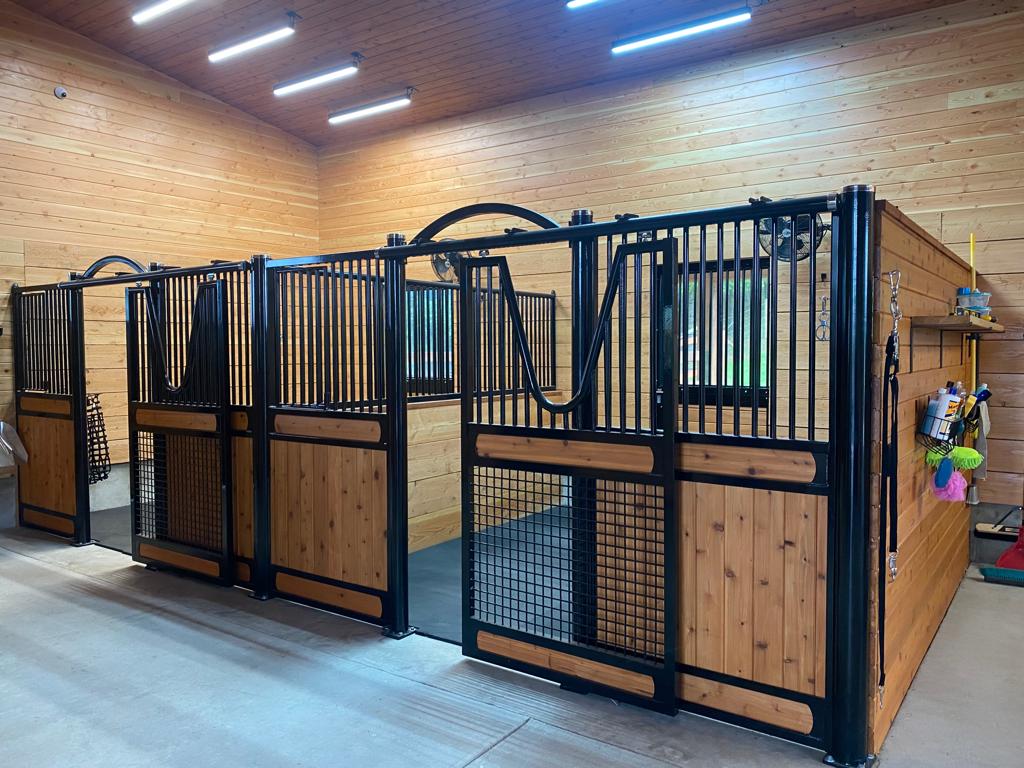
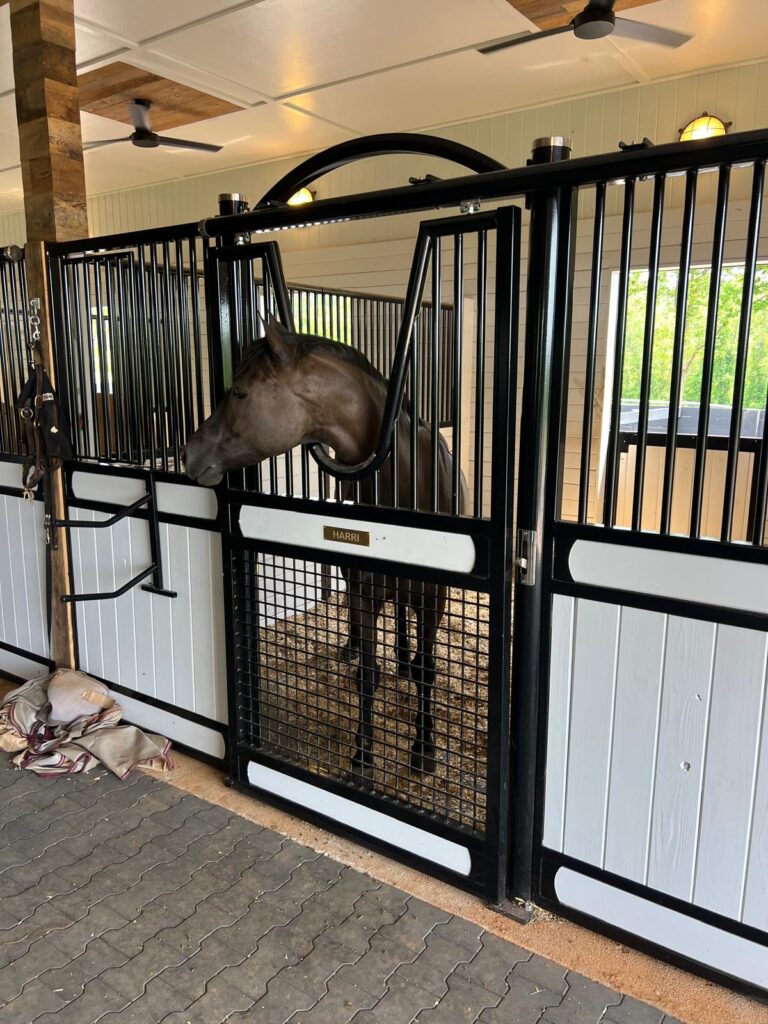
Potential Drawbacks:
Track Maintenance:
The track system of a sliding door can accumulate dirt and debris, potentially affecting smooth operation. Regular cleaning and maintenance are necessary to ensure proper functionality. As noted above, making sure your stalls have a durable and reliable track system is a must.
Opening Width Limitations:
While they save space, sliding doors might not provide as large an opening as hinged doors. This could be a consideration if you need to move large horses or equipment in and out of stalls.
Comparative Analysis
To make an informed decision, compare hinged and sliding stall doors on several key aspects:
Space Considerations:
Sliding doors are advantageous in barns where space is limited. Without the need for swing space, they are ideal for tight areas and narrow aisles.
Ease of Use:
Hinged doors offer wide openings, making it easier to handle large horses. Sliding doors, however, are often easier to operate in confined spaces and reduce the risk of injury.
Aesthetics:
Both hinged and sliding doors can enhance your barn’s appearance. Hinged doors offer a traditional look, while sliding doors provide a modern, streamlined aesthetic.
Safety Considerations:
Sliding doors generally create a safer environment by eliminating swing path risks. However, with proper design and installation, hinged doors can also be safe and user-friendly.
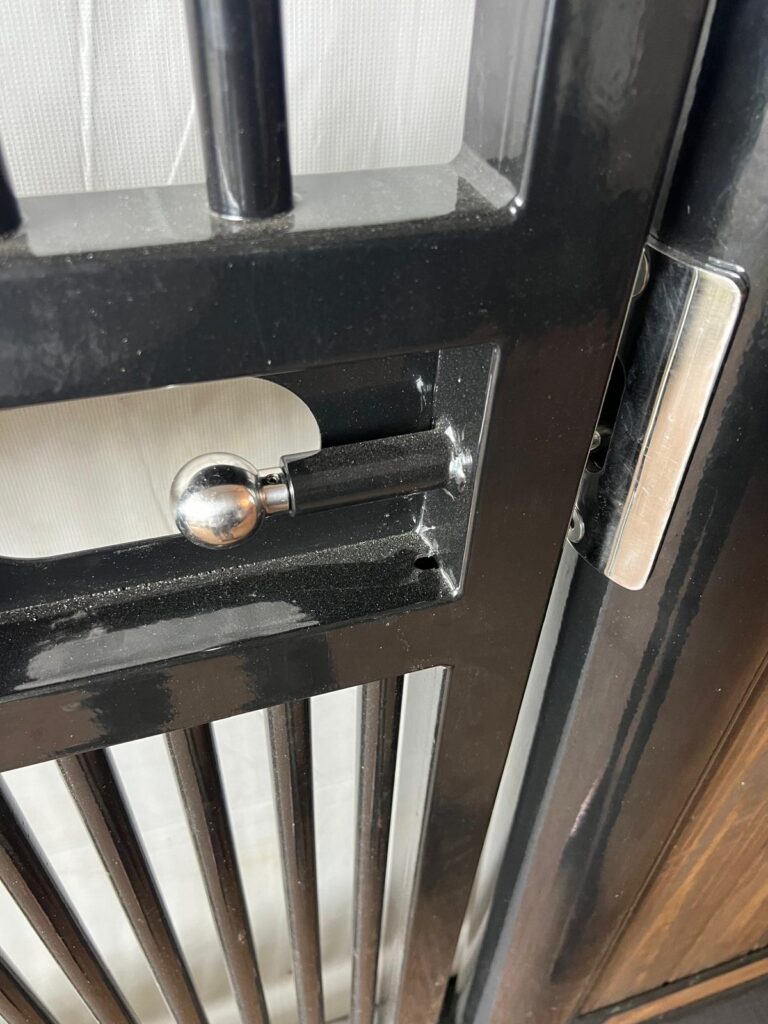
Choosing the Right Stall Door for Your Facility
Your specific needs and preferences will determine whether hinged or sliding stall doors are the better choice. Consider the following:
Barn Layout:
Evaluate your barn’s space. Remember that sliding stall doors make use of less space, while hinged doors can offer better access in barns with wide aisles.
Horse Behavior:
Consider the size and temperament of your horses. Larger, more active horses might benefit from the wide openings of hinged doors, while sliding doors offer a safer, more confined space.
Maintenance Capacity:
Assess your ability to maintain the doors. Sliding doors require regular track cleaning, while hinged doors need occasional hinge adjustments.
Budget:
Consider your budget for installation and maintenance. Both door types offer high quality and durability, but initial costs and ongoing upkeep can vary.
Conclusion
The choice between hinged and sliding stall doors depends on your facility’s layout, your horses’ needs, and your personal preferences. Both types offer unique advantages, and selecting the right one will create a safe, functional, and aesthetically pleasing environment for your equine companions.
Need more assistance in choosing the right one? We’re always happy to assist. Just click here to contact us. Even if you don’t select one of our stall doors, out team will help you make the right decision for you situation.

